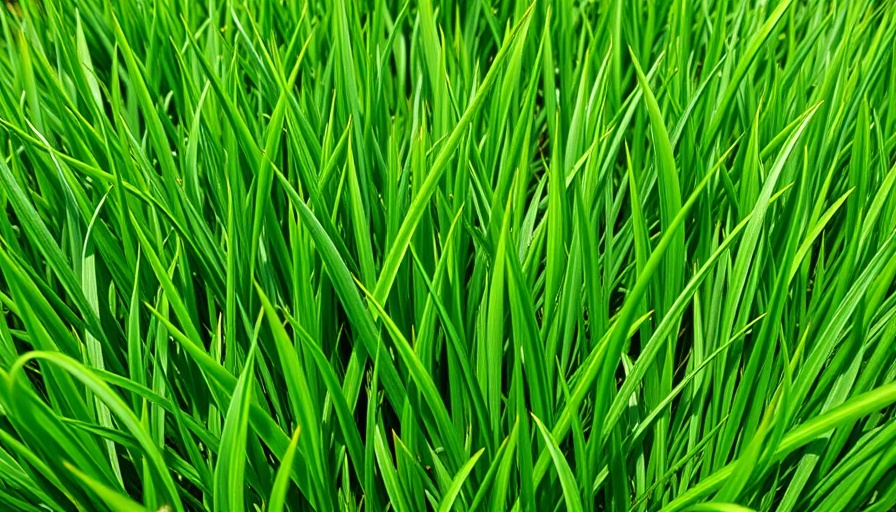
Unlock the Secrets to a Thriving Kentucky Bluegrass Lawn
Desired for its stunning appearance and resilience, Kentucky bluegrass captures the hearts of homeowners seeking to enhance their outdoor spaces. With a rich blue-green color and soft texture underfoot, this cool-season grass is not just pleasing to the eye; it also has practical benefits, such as excellent recovery from wear and tear. However, growing a successful Kentucky bluegrass lawn requires attention to detail and proper maintenance practices.
The Characteristics of Kentucky Bluegrass
Kentucky bluegrass, scientifically known as Poa pratensis, flourishes in cooler climates, making it a favorite across Northern states. Its ability to form a dense, lush carpet of grass is ideal for family yards and recreational areas. It grows best in well-drained soils with ample sunlight, performing optimally at a pH of 6.0 to 7.0. While it can endure wear, it has moderate drought resistance, demanding regular watering, especially during the warmer months. Newer varieties of Kentucky bluegrass have increased resistance to disease and are less prone to common lawn pests.
Step-by-Step Guide to Planting Kentucky Bluegrass
Establishing a lush Kentucky bluegrass lawn involves several carefully considered steps: Test the Soil, Choose the Right Time, Prepare the Soil, Spread the Grass Seeds, Lightly Rake and Roll, and Water Thoroughly.
- Step 1: Test the Soil - Begin by analyzing your soil. You can either send it to a local extension office or use a soil test kit at home to check pH and nutrient levels. This will guide your amendments for optimal grass growth.
- Step 2: Choose the Right Time - Late summer or early fall is the prime time for planting Kentucky bluegrass. Seeding around Labor Day aligns with cooler temperatures and is complemented by adequate rainfall, reducing the need for excessive watering.
- Step 3: Prepare the Soil - Clear debris, till the soil to about six inches deep, and mix in compost to enhance fertility and drainage. This prep work ensures your lawn has the nutrients necessary to thrive.
- Step 4: Spread the Grass Seeds - Using a drop spreader, lay the seeds at two to three pounds per 1,000 square feet, ensuring even coverage by spreading half in one direction and the other half perpendicular to that.
- Step 5: Lightly Rake and Roll - Rake lightly to cover the seeds and optionally roll the area to ensure they are pressed into contact with the soil.
- Step 6: Water Thoroughly - Immediately after planting, soak the area deeply, and during the critical germination period (14 to 30 days), keep the soil consistently moist.
Essential Care for Kentucky Bluegrass
Maintaining a Kentucky bluegrass lawn requires continued care post-planting. Regular watering—about one inch per week—and careful fertilization (applying nitrogen-based fertilizers in late summer and fall) will keep your lawn vibrant. Additionally, mowing at a height of two to three inches allows for deeper root growth, which helps the grass endure heat, drought, and heavy foot traffic. The practice of mulching clippings back into the lawn provides organic nutrients that promote healthy growth.
Common Challenges and How to Overcome Them
Despite its many benefits, Kentucky bluegrass can be susceptible to diseases and pests like grubs, billbugs, and various fungal infections. Preventative measures are key: conduct regular inspections of your lawn; maintaining good cultural practices will minimize risks. Also, consider mixing Kentucky bluegrass with other grass types, such as perennial ryegrass, which can increase resilience and diversity, further sustaining health through varying conditions.
Frequently Asked Questions About Kentucky Bluegrass
Answering some common queries may help demystify the care for your Kentucky bluegrass:
- Is Kentucky bluegrass hard to grow? - While it does require regular maintenance, with the right practices, it can thrive.
- How much sunlight does it need? - It thrives best in full sun, requiring at least 6 to 8 hours of direct sunlight daily.
- Should I reseed my lawn? - Yes, overseeding in early fall will help maintain a thick and lush lawn.
Embrace Your Gardening Journey
Creating a stunning Kentucky bluegrass lawn may not be an effortless task, but with the right preparation, knowledge, and commitment, you can achieve a breathtaking outdoor sanctuary. For many homeowners, lawn care is not just a chore; it’s an opportunity to connect with nature, spend time outdoors, and beautify their home landscape.
If you’d like additional help, consider partnering with a local lawn care professional. They can provide tailored advice on the right products and techniques to use, freeing up your time and ensuring your lawn remains a vibrant part of your home. Take the step towards transforming your outdoor environment today!
 Add Row
Add Row 
 Add
Add 


Write A Comment